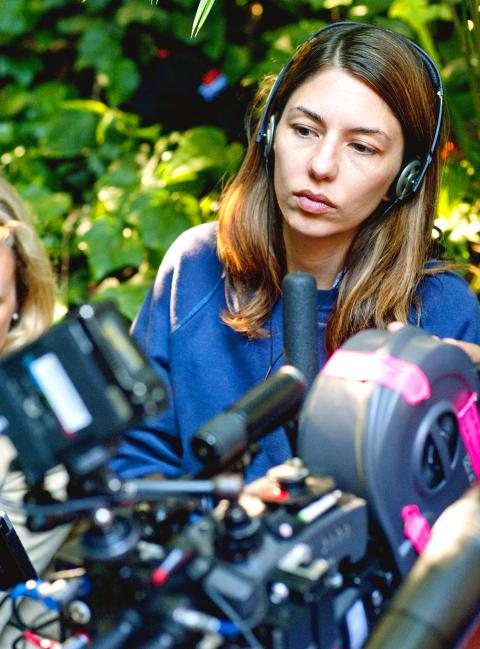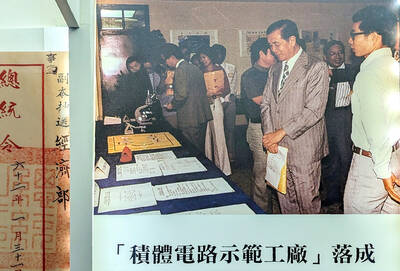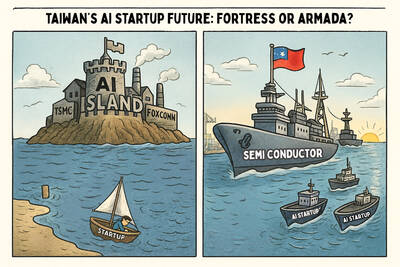Meeting Sofia Coppola is an enigmatic, opaque experience. As she discusses her new movie Somewhere, her first in four years, she is so level, so calm, with a gently modulated voice and that very American kind of untroubled socio-conversational gyroscope that stays on an absolute horizontal, imperceptibly humming through the conversation. Famously the daughter of Francis Ford Coppola, she already has an impressive body of work: The Virgin Suicides (1999), Lost in Translation (2003) and Marie-Antoinette (2006).
It was very much the second feature, a quirkily platonic, Tokyo-set romantic friendship between Scarlett Johansson and Bill Murray, which catapulted her into the big league, and established the Coppola name as a directing dynasty, in the way that Iran’s Samira Makhmalbaf carried on the reputation of her father, Mohsen. Her private life has not been without trouble: She married Spike Jonze in 1999; they were divorced four years later. Her partner now, with whom she has two children, is French musician Thomas Mars, front man of the band Phoenix. Her films, however, do appear to remind us more pointedly of that other important man in her life: her father.
This fourth film tells the story of a feckless, pampered movie star, Johnny Marco (played by Stephen Dorff), as he lives a luxurious, meaningless life in the Chateau Marmont hotel in Los Angeles; drifting as if on an inflatable in a Hockneyesque pool. Frequently boozing and womanizing, he is still often unhappily alone and, like a teenager in his bedroom, sometimes gets called down by the grownups to do publicity events for his latest action movie. In career and personal terms, he is on the verge of stagnation, but his life gets turned around when he has to look after Cleo (played by Elle Fanning), his 11-year-old daughter from a failed relationship.

Photo: Bloomberg
When I meet Coppola during the Venice Film Festival, in a shady garden on the Lido, her untroubled gaze and easy, musical tone unmistakably reproduce the authorial tone of the film; she has a gentle, lilting tendency to uptalk and a semi-articulacy, like a super-intelligent version of Valley-girl speak. She is unjudging, pleasant, almost withdrawn, although cheerfully confesses to having a brain like “jelly” having gone through hour upon hour of interviews before I showed up.
I ask if doing things like this — exactly the kind of publicity junket experiences that she coleslaws together into ironic montages — feels like being inside her own film. Coppola smiles and laughs a little quizzically, as if at an unfamiliar thought: Throughout our conversation she affects to be surprised, albeit in the mildest possible way, by what seem to me the most screamingly obvious things. “Well, when I was watching the movie, I felt I was … in the movie!” she finally concedes, gently amused.
Coppola says that she wanted to make a film about celebrity and its alienated, alienating effects, because she had been away from the US, where the celeb cult is at its strongest. “I don’t feel it, because I’m not in public so much,” she says, “so it’s not something that I experience personally. There are all these problems in the press with all these actors having this party lifestyle …”
She continues: “I was living in Paris, and I was taking some time off after my daughter was born, and sometimes people would come over and bring these tabloids from the US. It’s not around in Paris, the way it is in America, this crazy obsession with celebrity, all these reality shows. I wanted to do something about this moment in our culture.”
Coppola adds that her film is not a satire, as such: “I wanted to be empathetic and not judgmental, not putting over a big message, but more thinking about what’s on the other side of all this?”
And how does she think Los Angeles comes across in the film? For example, that title, is it an allusion to Gertrude Stein’s remark about Oakland, California: “There is no ‘there’ there”? Coppola laughs, but says no. The title is inspired by the pop art paintings of Ed Ruscha, who produces billboard-style images of single words. Coppola now lives in New York, and has perhaps an East Coast detachment from California. “There are parts of it that I hate,” she shrugs, “all the strip malls; but there are nice parts. I lived in Los Angeles throughout my 20s; there wasn’t the same tabloid culture when I was there. Being famous now seems like a realistic goal for everybody. Everybody wants to be famous.”
I move the discussion on to the father-daughter relationship in Somewhere, and how it echoes the quasi-father-daughter relationship in Lost in Translation. How was it, making what was surely an obviously autobiographical movie? The question appears to disconcert Coppola, as if it had not occurred to her. For a moment I felt like the man in the Monty Python sketch who says to Mr Smoke-Too-Much that he must get jokes about his name all the time, and Mr Smoke-Too-Much replies that no one has ever done so before.
“Is this psychoanalysis?” she asks, smilingly. “Well, I didn’t think about that. The father relationship is an important relationship for girls and it figures in my work.” But is hanging out with her dad in hotels something that Sofia Coppola used to do, like Cleo in Somewhere?
“I definitely put a lot of memories of being around that age — from kid to teenager — and traveling with my dad, being in hotels and being in this adult world. He took us to places that kids don’t usually go. For example, when I was 16, we went to Cuba and met Fidel Castro. We went to Las Vegas and Reno. He usually wrote scripts in hotels there and I went with him. It’s your first important relationship as a girl and it shapes you, growing up; I wanted to show the importance of that relationship.”
And did her father have any advice or input into the work she did on Somewhere? Coppola nods. “I showed the final cut to him — I didn’t want to show the film to him before it was finished. I was happy that he really appreciated it. He told me that it felt like a movie that only I could have made. I used to show him rough cuts and get his advice. But now I have got more experience.”
She says that the filmmaker who inspires her most now is Gus van Sant — from whom she has taken ideas and also, importantly, the cinematographer Harris Savides, who works with Van Sant a good deal. Certainly, Coppola may be her father’s daughter in terms of confidence, but her filmmaking language has evolved a long way away from his; unlike a raft of male directors who have, consciously or not, imbibed his influence.
Somewhere may come to be seen as a minor, self-indulgent part of her body of work: an autobiographical jeu d’esprit, a mood piece, a movie conceived within a luxury hotel — a B-side to Lost in Translation that traces the charmed circle of celebrity without looking too deeply at what is within it. But her father is right. It could only have been made by her, and she is a distinctive individual film-making voice. In person, Coppola is charming, if disconcerting. As our conversation ended, and I was ushered away by her agent, that easy smile remained unchanged, its sphinxish reserve unchallenged.

Oct. 27 to Nov. 2 Over a breakfast of soymilk and fried dough costing less than NT$400, seven officials and engineers agreed on a NT$400 million plan — unaware that it would mark the beginning of Taiwan’s semiconductor empire. It was a cold February morning in 1974. Gathered at the unassuming shop were Economics minister Sun Yun-hsuan (孫運璿), director-general of Transportation and Communications Kao Yu-shu (高玉樹), Industrial Technology Research Institute (ITRI) president Wang Chao-chen (王兆振), Telecommunications Laboratories director Kang Pao-huang (康寶煌), Executive Yuan secretary-general Fei Hua (費驊), director-general of Telecommunications Fang Hsien-chi (方賢齊) and Radio Corporation of America (RCA) Laboratories director Pan
The consensus on the Chinese Nationalist Party (KMT) chair race is that Cheng Li-wun (鄭麗文) ran a populist, ideological back-to-basics campaign and soundly defeated former Taipei mayor Hau Lung-bin (郝龍斌), the candidate backed by the big institutional players. Cheng tapped into a wave of popular enthusiasm within the KMT, while the institutional players’ get-out-the-vote abilities fell flat, suggesting their power has weakened significantly. Yet, a closer look at the race paints a more complicated picture, raising questions about some analysts’ conclusions, including my own. TURNOUT Here is a surprising statistic: Turnout was 130,678, or 39.46 percent of the 331,145 eligible party

President William Lai (賴清德) has championed Taiwan as an “AI Island” — an artificial intelligence (AI) hub powering the global tech economy. But without major shifts in talent, funding and strategic direction, this vision risks becoming a static fortress: indispensable, yet immobile and vulnerable. It’s time to reframe Taiwan’s ambition. Time to move from a resource-rich AI island to an AI Armada. Why change metaphors? Because choosing the right metaphor shapes both understanding and strategy. The “AI Island” frames our national ambition as a static fortress that, while valuable, is still vulnerable and reactive. Shifting our metaphor to an “AI Armada”

The classic warmth of a good old-fashioned izakaya beckons you in, all cozy nooks and dark wood finishes, as tables order a third round and waiters sling tapas-sized bites and assorted — sometimes unidentifiable — skewered meats. But there’s a romantic hush about this Ximending (西門町) hotspot, with cocktails savored, plating elegant and never rushed and daters and diners lit by candlelight and chandelier. Each chair is mismatched and the assorted tables appear to be the fanciest picks from a nearby flea market. A naked sewing mannequin stands in a dimly lit corner, adorned with antique mirrors and draped foliage